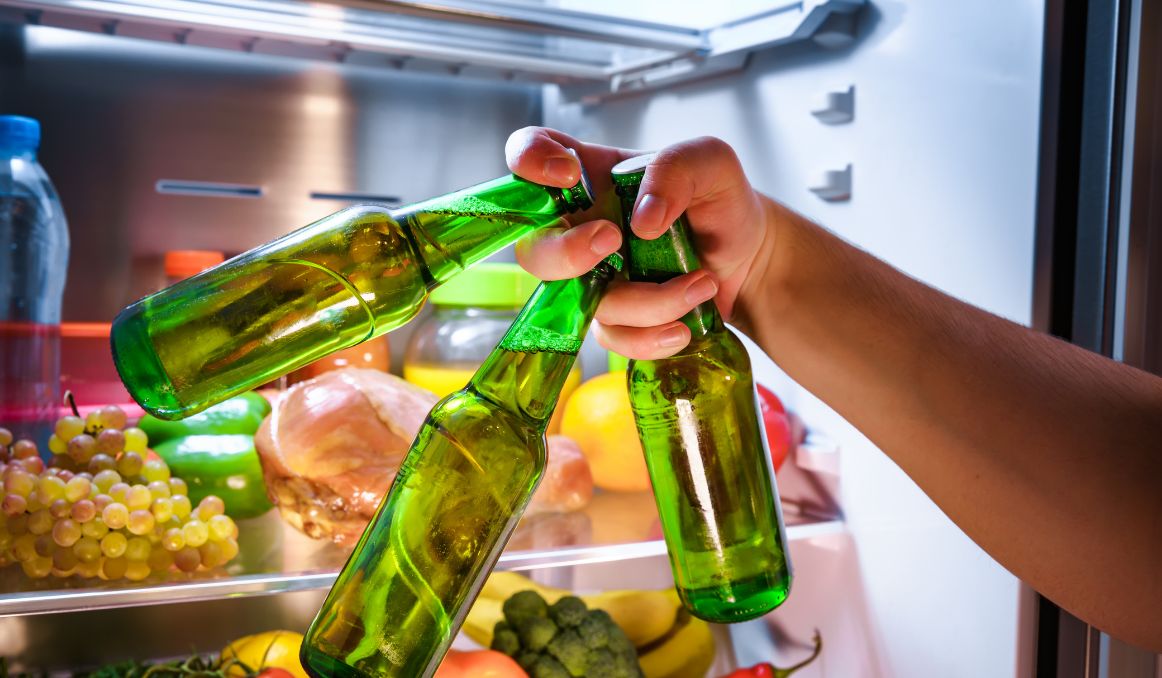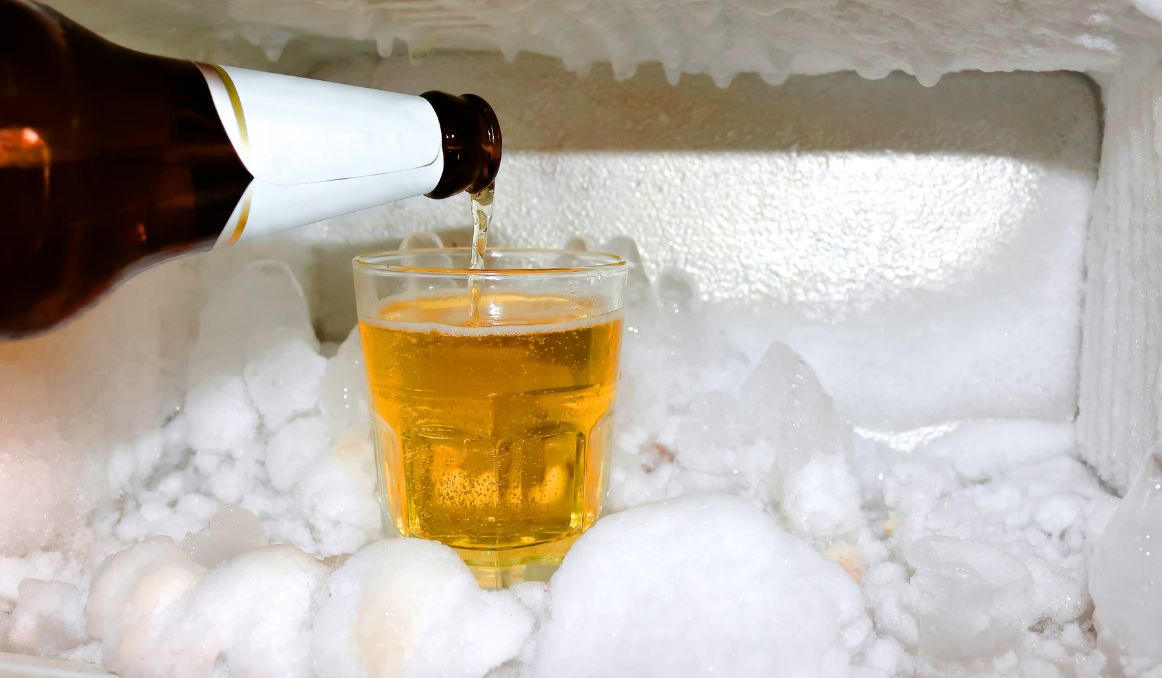Does Beer Go Bad in the Fridge? How to Store Beer
It’s an interesting quandary to be in. Where do you store your beer? What if you’re a beer aficionado and you like to collect various brews, try out a different craft beer each week, and you drink in moderation? You might end up with several six packs of beer at a time, and, unless you have an entire refrigerator dedicated to beer storage (trust us, some people do), you will need to know where to store beer so it doesn’t go bad.
Does beer go bad in the fridge? How to store beer so you can get the most out of it is a critical question for those of us in the beer connoisseur business. We want to explore and experiment with different varieties.
And those of us who experiment with brewing and are trying and tasting our own varieties of craft beer also need storage options until we do invest in a big beer fridge.
In the meantime, how do we best store beer?
10 Things to Know About Beer Storage

1. Don’t Worry About Skunk
People often worry about their beer “skunking,” which just means getting that skunky flavor and smell, if they allow the beer to go warm and then cool it down again. Rest assured, skunking only happens as a result of hours of exposure to high UV light.
Your beer can warm up a bit and then be cooled down without having to worry about off flavors.
2. Keep It Cool: Beer Storage Temperature
The general rule is to store bottled beer in cool spaces below 60 degrees Fahrenheit. It does not have to be a fridge or a beer fridge. It can be a basement or pantry, as long as the temperature does not heat up or wildly fluctuate. Maintaining the same temperature for your beer bottles is key.
In the good old days, before refrigeration, beer was stored in basements, cool and dark, at cellar temperature. But today, with the advent of central heating, we cannot count on “room temperature” to be so cool and dark.
Also keep in mind that serving temperature is usually slightly above storage temperature, so your beer will be served warmer, as slightly warmer beer releases all the flavors and aromas created during brewing.
3. Warm and then Cool Is Fine
You can store your beer in warmer place, say 60 degrees, and then cool it down even further in the fridge or in your beer fridge, if you have one, for a day or two before serving. This temp change should not affect how your beer tastes, your beer flavor or aroma profile.
4. Keep It Dark
Dark is even more important than cool, hence the use of brown glass bottles. It is the light that can really send your flavors off, leading to skunking. So be sure your beer gets no exposure to light wherever you may store it, to prevent that skunky taste.
5. Watch Your Dates
More important that the date you buy your beer is the date your beer was “born” or bottled. Watch those dates, and do not store beer for longer than about 8 months, and your beer’s flavor and aroma profile should last the duration.
6. Warmer Equals Shorter
A good rule of thumb is to remember that the warmer your beer storage, the shorter its shelf life will be. Beer stored in a refrigerator or a beer fridge does indeed outlast warmer beer storage by several months. So if you are a genuine collector and plan to store lots of beer for a long time, it may be wise to invest in a beer fridge.
7. Not too Cold

Don’t freeze your beer! It will freeze at temps below 27 degrees Fahrenheit, and you don’t want to serve extremely cold beer that is also slushy and flat. Freezing beer will ruin it in terms of drinkability and enjoyability. So it is even more important to not freeze it than it is to worry about whether it might get too warm.
Remember, you can use frozen beer for other things, like beer margaritas or marinades, but you will not want to drink frozen beer once it’s headed south of 27 degrees. The ideal storage temperature is above 40 and below 60.
8. Fermentation Does not Equal Storage
While most beers, whether it’s bottle beer or canned beer, do not need to be stored at cold temperatures, you do not want to store them at their fermentation temperatures, which are considerably warmer than storage temps. Keep the storage temp below 60 degrees, and you should be fine.
While fermentation of ales is between 65 and 70 degrees, and serving beer can be closer to that temperature, for ideal preservation, you’ll want to store it much cooler.
9. Don’t Open It!
It should go without saying, but we’ll say it anyway, just in case, that once you open beer, storage is out of the question. Within hours, your beer will go flat and the flavor will change as it is exposed to air. So everything mentioned so far applies to unopened beer. If you want to store it, keep it airtight, dark, and cool.
10. Trust Your Senses
The best way to tell if your beer is still good, after months of storage in a cool, dark place, is to trust your senses. Your nose will tell you instantly if this is a beer you actually want to drink. Your eyes will tell you if your beer looks inviting. And your mouth will certainly inform you if you want to keep that first drink in your mouth. Trust them. They know the way.
In general, you can expect your beer to last for 6 to 8 months from the time it was bottled when stored in a cool, dry space. If kept in the refrigerator, you can expect it to last even a few months beyond that.
But, as the last tip points out, always trust your senses. If your beer is flat, stinks, or tastes off, just toss it and head out to the market for more.
Cheers!
Passionate about the beer and/or wine making process? So are we! If you’re interested in finding out how you can use our technology to control fermentation and monitor your yeast, save work hours and improve the cost-efficiency of your business, drop us a line at [email protected] or check out our product pages:
- Oculyze BB 2.0 (Better Brewing) Yeast Cell Counter App + Hardware
- Oculyze FW (Fermentation Wine) Yeast Cell Counter App + Hardware
Sources:


